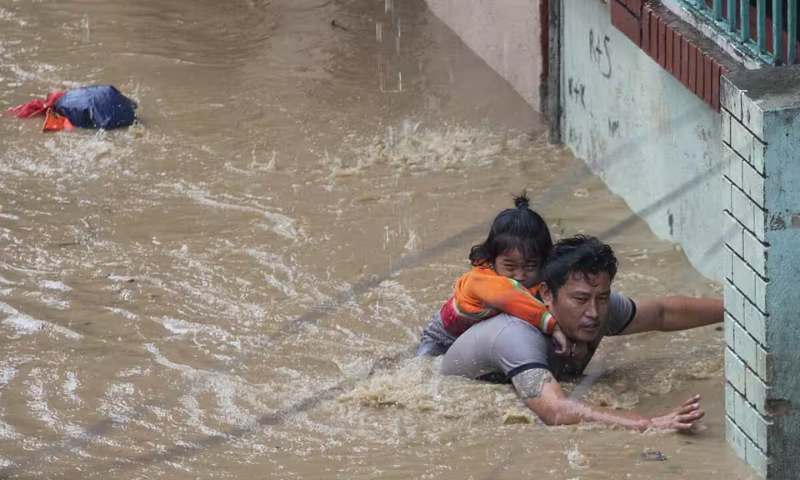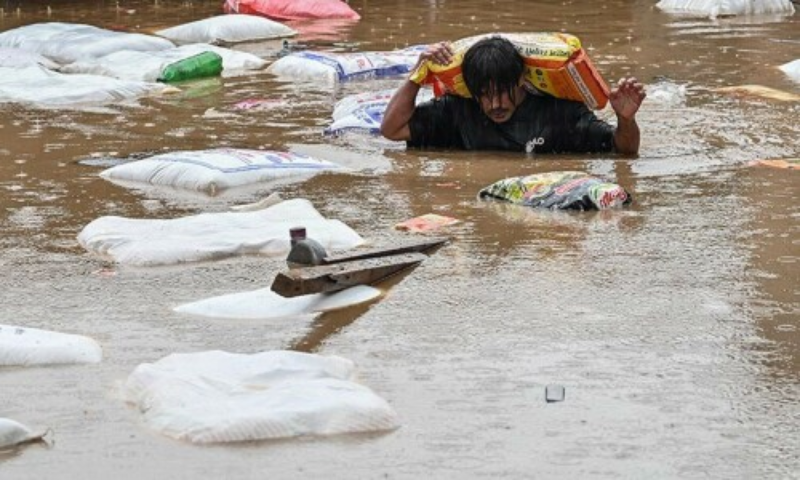KATHMANDU: Residents of Nepal’s capital on Sunday returned to their homes after catastrophic floods as the toll has risen to at least 170 deaths across the country, with 59 persons still reported missing.
The relentless monsoon rains that have battered the region have led to widespread destruction, inundating neighborhoods and disrupting essential infrastructure.
This weekend, heavy rainfall overwhelmed the capital, Kathmandu, with reports indicating that the valley experienced an unprecedented 240 millimeters (9.4 inches) of rain within a 24-hour period, the highest recorded since at least 1970, according to the country’s weather bureau.
Kumar Tamang, a resident of a slum area along a riverbank, recounted the harrowing experience of fleeing his home as waters surged into his dwelling. “This morning we returned and everything looks different,” the 40-year-old said, struggling to open doors jammed with mud. “Yesterday we were afraid that the water would kill us, but today we have no water to clean.”
Nepal’s National Disaster Risk Reduction and Management Authority confirmed the grim statistics of the disaster, highlighting the toll of flash floods and landslides that are common during the monsoon season but are increasingly intensified by climate change.
Home Ministry spokesman Rishi Ram Tiwari reported that more than 3,000 people have been rescued from affected areas, and heavy machinery is being deployed to clear blocked highways that have severed connections to Kathmandu.
READ ALSO: Israel Kills Another Top Hezbollah Official in Lebanon as Airstrikes Continue
The floods have devastated entire neighborhoods, with the Bagmati River and its tributaries breaching their banks and submerging homes and vehicles. Many residents faced desperate situations, with reports of individuals cutting through roofs to escape the rising waters.
Bishnu Maya Shrestha, a local resident, described the terrifying ordeal of jumping from roof to roof before being rescued by boats.
Rescue efforts are ongoing, with over 3,000 security personnel deployed to assist in the operation, utilizing helicopters and motorboats to reach those stranded. Domestic flights in and out of Kathmandu resumed on Sunday morning after being halted due to adverse weather, although more than 150 flights were canceled in the preceding days.
The summer monsoon season typically brings 70-80 percent of South Asia’s annual rainfall, but the increasing frequency and severity of deadly floods and landslides in recent years have raised alarms among experts. This year alone, over 260 people have died in rain-related incidents across Nepal.
























